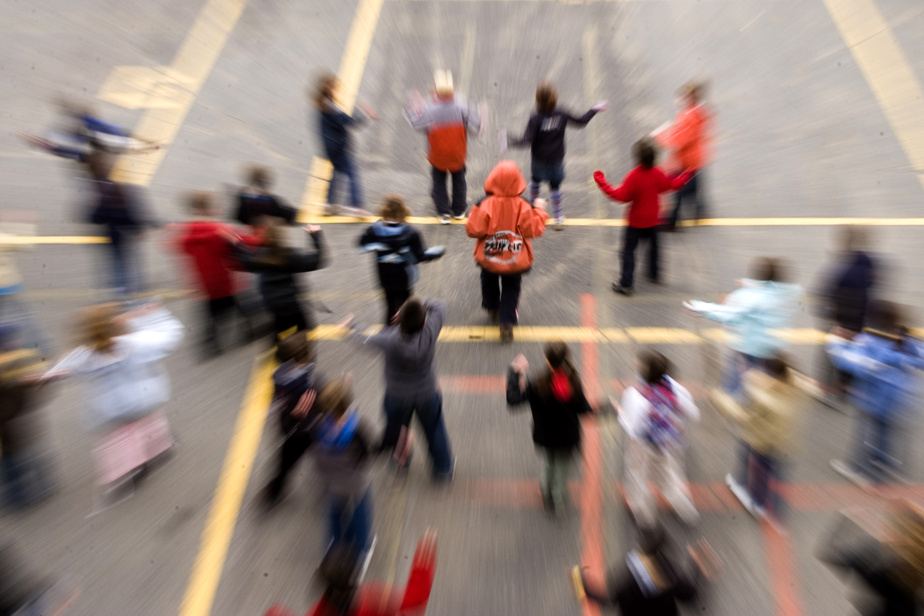The 2024 edition of ParticipACTION’s Physical Activity Report Card for Children and Youth notes a very slight improvement in the situation, but adds climate change to the list of obstacles that can prevent young people from moving.
ParticipACTION this time grants a grade of “D+” to all physical activity of young people and children, compared to a grade of “D” in the previous edition of the report, in 2022.
Even if the grade for overall physical activity has improved, D+ still remains an undesirable grade, recalls a document which presents the salient points of the report.
“It’s all well and good to give grades of D or F, to say that we’re not moving enough, but it takes a slightly different angle so that […] politicians listen a little,” explained a spokesperson for ParticipACTION, Doctor Jean-Philippe Chaput.
The improvement from “D” to “D+” is essentially attributable to the end of the restrictions imposed by the pandemic, he added, “and we have returned to our old habits”.
The report highlights for the first time the different ways in which climate change can interfere with the physical activity of young people.
It is thus emphasized that the number of weather alerts has more than doubled over the last ten years in Canada, before warning that “the current and future effects of climate change could be particularly harmful in terms of the physical activity of children and young people”.
For example, unfavorable weather conditions could lead to the cancellation of outdoor sports or leisure activities, potentially increasing the amount of indoor sedentary time and exposure to screens.
“Children are at increased health risk from extreme temperatures, even before fitness levels are taken into account,” ParticipACTION adds.
Because children’s airways are smaller and they have to breathe more quickly, they will, for example, inhale more polluted air. We also remember that children cannot regulate their body temperature in extremely hot or cold climates as well as adults, due to their greater body surface area relative to their weight.
Increasing disparities
The 2022 edition of the report revealed that the activity levels of racialized and Indigenous children and youth experienced a greater decline than those of other children and youth during the COVID-19 pandemic. Studies have also shown that young people from disadvantaged neighborhoods depend more on outdoor games for physical activity due to a lack of family resources.
“It is easy to imagine that an increase in temperatures and the frequency of unpredictable weather events associated with climate change could potentially reduce access to nearby outdoor recreational spaces, such as parks, sidewalks and even playgrounds. parking space,” the document states.
The report finds that 39% of children and young people aged 5 to 17 met the recommendation to accumulate sixty minutes of moderate to vigorous physical activity each day. Only 31% of girls, compared to 57% of boys, respected this recommendation.
“There was a rebound effect (after confinement), but the rebound effect is seen more in boys,” said Dr. Chaput. Boys returned to their pre-COVID physical habit level, but girls did not. »
It is difficult to explain this disparity, but “it seems that the girls have lost their habits”, he explained. There can also be a ripple effect, since girls mostly want to do what their friends are doing; and if fewer of their friends play sports, then the whole thing loses interest.
Less than a third of children and young people (49% of children, 17% of young people) respected the recommended limit of screen time for leisure purposes, i.e. a maximum of two hours per day.
This observation of the time limit was lower in disadvantaged households than in better-off households, which could again reflect more difficult access to activities outside the home in these households.
“For the less well-off who are more at risk, for them, it is important so that they can move, that they go outside because they perhaps do not have access to sports which are expensive, a said Doctor Chaput. So climate change will affect the least well off even more than the most well off who have access to expensive facilities, for example. It’s an additional barrier that’s added. »
